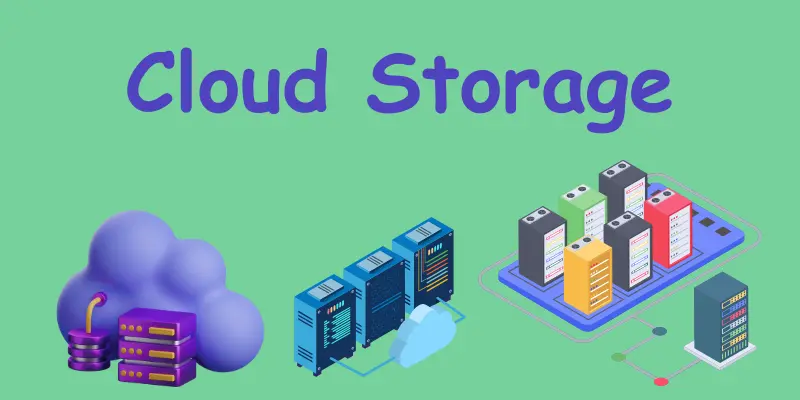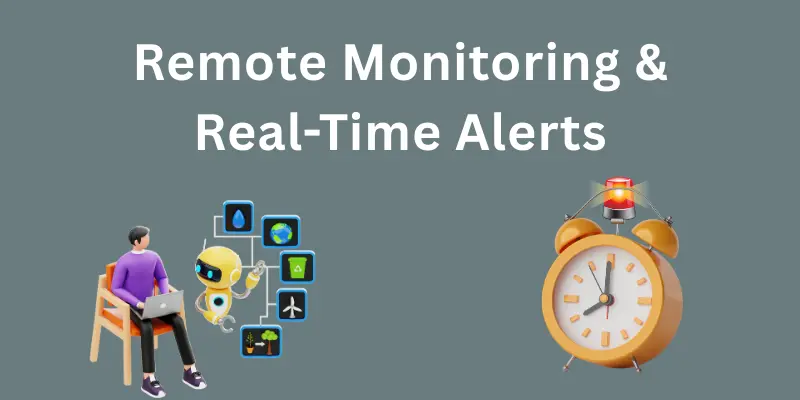The Future of Video Surveillance: How Cloud Storage is Shaping the Industry
The worldwide video surveillance sector is progressing at a blistering speed. Fortune Business Insight indicates that the sector is projected to increase from $30.45 billion in 2022 to over $62.75 billion by 2029, thus reflecting a tremendous change in the manner in which security will be monitored and managed.
Contemporary surveillance systems are the impetus of this change, and utilize real-time data, the cloud, and AI based technologies to provide safety, efficiency, and scale.
Video surveillance cloud storage specifically has become more critical to this change, serving as the backbone for remote access, big data, and intelligent analytics.
Cloud Storage: The Engine Behind Modern Surveillance
Organizations are moving from traditional storage systems with on-premise infrastructure and are now transitioning to cloud storage systems, because of scale, upfront costs, and management.

Video surveillance cloud storage allows security teams to store, access, and analyze footage at scale without any local hardware constraints. In addition to less required maintenance, organizations can access video surveillance in real-time, which is very important for when an organization has multiple locations and/or remote staff.
In addition, cloud storage provides increased redundancy and disaster recovery. In contrast to physical servers, which can be damaged or stolen, cloud footage is backed up on redundant systems, ensuring that and video data is backed up and accessible.
Encrypted storage and compliance with global data privacy requirements are also becoming more common with providers, especially when it comes to sensitive surveillance data.
AI-Powered Video Analytics
The use of artificial intelligence is one of the most thrilling new trends in cloud-based video surveillance. AI algorithms can now handle real-time facial recognition, license plate reading, object identification, and, in some cases, behavioral identification.
These functionalities automatically reduce the need for a human operator to manually view video footage and allow the operator to detect a threat or abnormal behavior much faster.
Video analytics driven by AI capitalizes on cloud storage, allowing them to analyze and conduct analysis of extensive video datasets supported by elastic compute resources, and enabling companies to glean actionable insights from archival surveillance data.
For example, AI can extract insights on foot traffic trends in retail stores, identify suspicious practices in transportation nodes, or even determine the likelihood of breaches based on anomalies in activity trends.
Integration with IoT Devices
The expanding ecosystem of Internet of Things (IoT) devices is another trend propelling change in surveillance. Smart cameras, motion detectors, door sensors, and environmental monitors, can now be seamlessly integrated into cloud-based video surveillance systems.
This interconnected system provides a new way to see physical security as a whole and collaborate in response across multiple endpoints.
With IoT integration, a motion sensor could trigger a camera nearby to begin recording and notify security personnel while the footage is automatically stored in the cloud for later use.
The cloud infrastructure connects all of these devices together, regardless of location, where the data is managed centrally for optimal efficiency.
Scalability and Flexibility
Contemporary surveillance systems, in particular for businesses, education, and municipalities, require a level of scalability. The system architecture of a cloud video surveillance system is flexible and enables the system to scale up or down depending on the number of devices connected, the amount of footage utilized, or the level of analytics needed.
This flexibility offers the business the ability to meet security needs without having to spend significant capital on new infrastructure.
Cloud storage additionally accommodates tiered video retention policies that allow newer video to be retained at its higher resolution while the older video is archived or compressed to free up storage. This enables organizations to get the most efficient use of technical and organizational resources without sacrificing the original video quality or retention.
Furthermore, subscription-based models help to mitigate costs while providing organizations with the ability to have direct access to features at the time of being updated.
Remote Monitoring and Real-Time Alerts
The fact that surveillance can be monitored from an offsite location is one of the significant perks of cloud-based surveillance technology. Security teams no longer have to be physically on-site to monitor and oversee what is occurring. There are affordable cloud-based systems that have internet or mobile application access to footage. All systems can provide live alerts and notifications of events directly from the application.

The ability to do this remotely is a game changer for those industries, such as logistics, retail, and healthcare, where having security 24/7 is a must. It can be extremely effective in giving security personnel, and others, the ability to monitor unauthorized access times or check on high-risk areas during busy times of the day.
Plus, it will leverage cloud-based video monitoring to provide a quick response and informed decision.
Cybersecurity and Compliance
As surveillance information is being digitized and stored in the cloud, conversations are prominently existing related to cybersecurity. The primary providers are now providing these services along with end-to-end encryption, multifactor authentication, and regular security assessments, among other things to protect from breaches.
Additionally, cloud-based surveillance systems can be modified to meet regional compliance obligations such as GDPR, HIPAA, or SOC 2, to name a few.
Businesses need to ensure they have empowered vendors whose service agreements safeguard data in active motion and which provide visibility into permission access controls and ensure compliance.
This posture regarding cybersecurity secures sensitive video footage and provides stakeholders and regulators with the assurance they assert they need.
The Road Ahead
The future of video surveillance is heavily tied to the cloud. As AI and IoT become more established along with superior cybersecurity measures, these cloud-based systems will become increasingly intelligent and capable while exhibiting faster response times and greater resilience.

The transition toward video surveillance cloud storage should not be considered merely a practice of the times—this is a transformational change happening right now that will fundamentally alter the way organizations view safety, compliance, and operational intelligence.
More integrated technologies will emerge in the future with smart city infrastructure, more autonomous surveillance capabilities, and more predictive analytics integration.
Companies and organizations that adopt these technologies sooner will improve their security architecture, density of decisions based on data, and advantage over the competition.
Conclusion
The video surveillance industry is undergoing a major transformation, driven by the rise of cloud technology, AI, and IoT. These innovations are not only improving security but also enabling smarter decision-making, faster response times, and greater flexibility.
As organizations seek scalable and future-ready solutions, cloud-based surveillance offers the infrastructure and intelligence needed to meet modern demands. Embracing this shift isn’t just a tech upgrade—it’s a strategic move toward a safer, more connected future.
Key Takeaways
- Video surveillance cloud storage is an integral part of the transition to modern security systems that are scalable, intelligent, and accessible.
- AI-enabled analytics enhance the ability to detect threats and gain operational insight intelligently and in real time.
- IoT integration allows for an all-in-one, agile security system that can better protect you and your assets.
- Cloud infrastructure provides an affordable way to scale, access, and protect data from anywhere in real time.
- The future of video surveillance is cloud-native, intelligent, and completely connected with enterprises' digital transformation.
FAQs
Here are some of the most commonly asked questions related to cloud-based video surveillance:
What is cloud-based video surveillance?
Cloud-based video surveillance means storing your camera footage on the internet instead of a local device. It lets you watch and save videos using a secure online platform. You don’t need physical storage like hard drives. You can view footage from any location using a phone or computer. It’s easy to manage and works well for multiple sites.
Why is cloud storage better than traditional storage?
Cloud storage doesn’t need heavy hardware or manual backups. It protects your videos even if your local system is damaged or stolen. It’s easier to scale as your needs grow. You can also set different video quality and storage rules. Plus, updates happen automatically.
Is cloud video surveillance safe?
Yes, most cloud systems use strong security like encryption and multi-step login. Your data is stored in secure data centers. Only people with permission can access the footage. Many systems also follow privacy laws like GDPR. It’s safer than physical storage in many ways.
Can I access my surveillance footage from anywhere?
Yes, cloud systems let you access video from anywhere with internet. You can use a mobile app or web browser. It works well for businesses with many locations. You also get alerts and live feeds in real time. This helps you act quickly if something goes wrong.
How does AI help in video surveillance?
AI can spot faces, read license plates, and detect strange behavior. It saves time by checking footage automatically. You don’t need to watch hours of video. AI helps find real issues fast. It also gives reports and insights to improve safety.



Please Write Your Comments